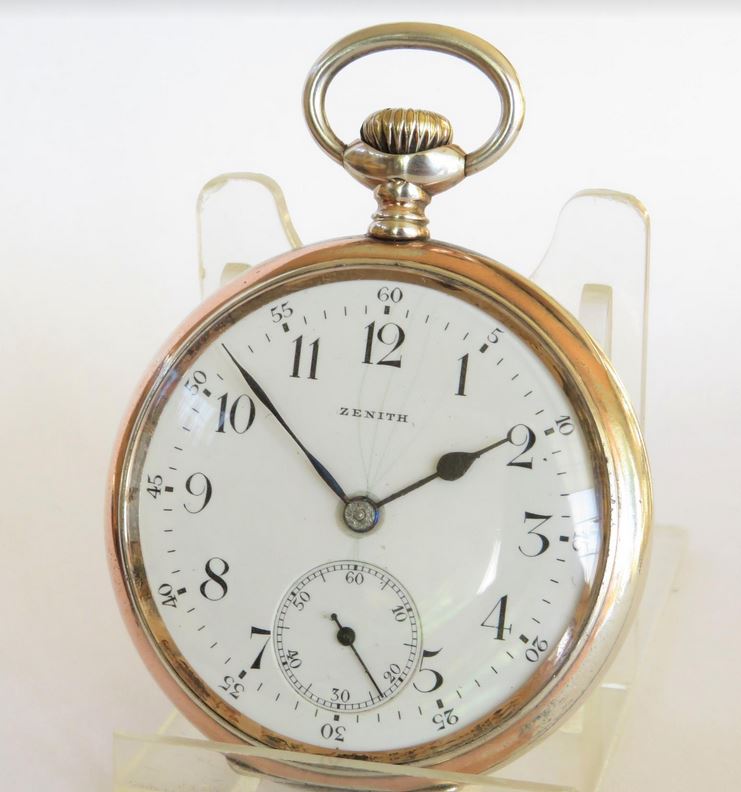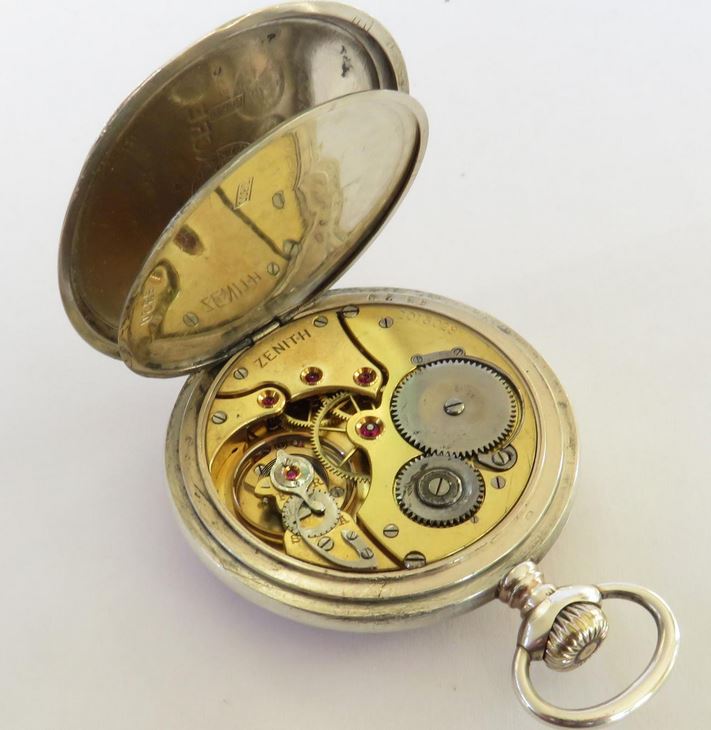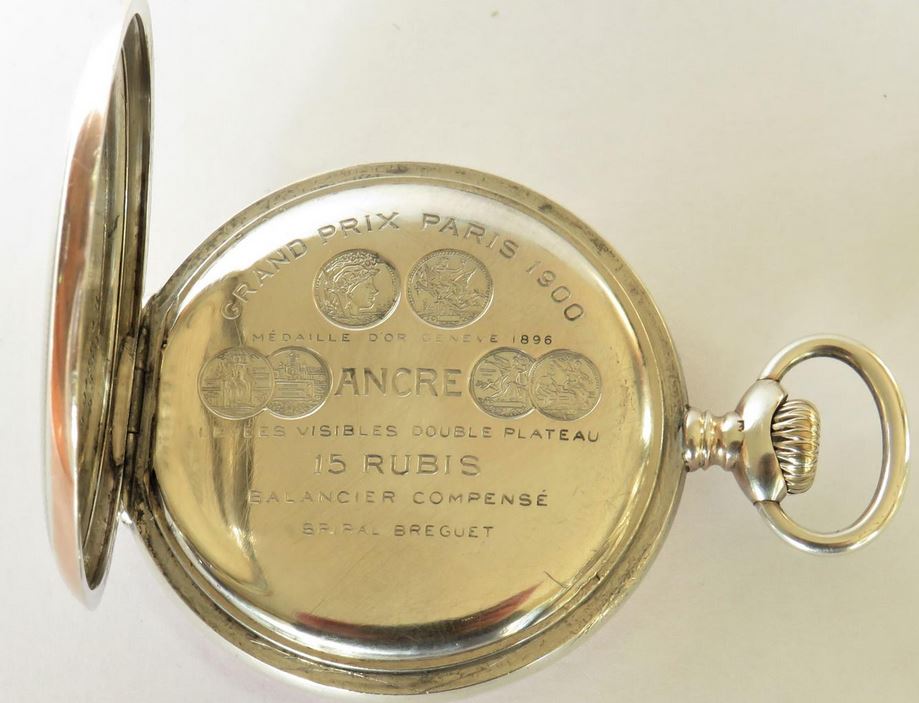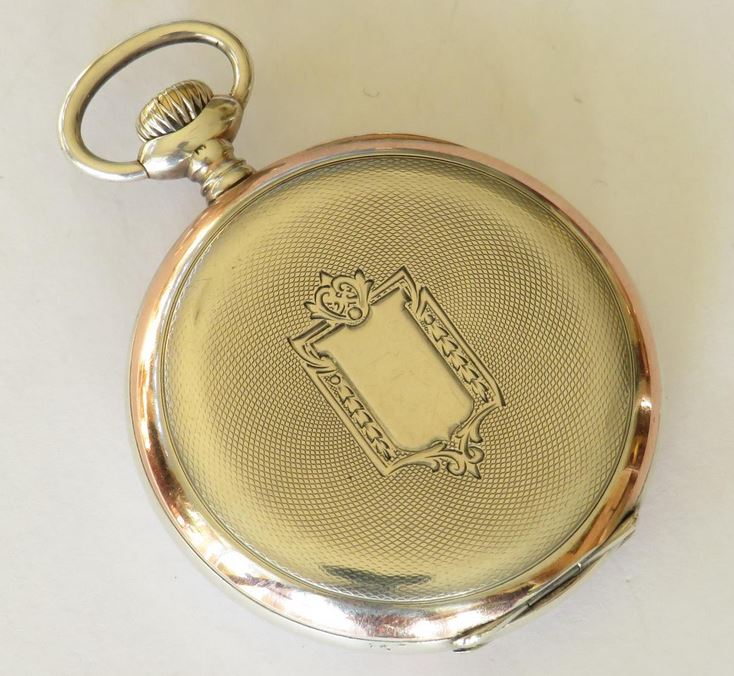Last updated on November 6, 2022
I don’t mean any disrespect, but Zenith as a modern watch manufacturer has never had any real appeal for me. I know the El Primero chronograph is considered a modern classic, but I am a fan of simplicity and the model just doesn’t appeal to my taste. However, in the world of antique watches, Zenith is an iconic watchmaker and has always been on my wish list. In this post, we will look at the latest addition to my collection, an antique Zenith pocket watch.
Workshop
In 1865, Georges Favre-Jacot, a 22-year-old watch apprentice, launched his own watch company in Le Locle, Switzerland. It was called “Fabrique des Billodes” after the name of the district where it was located. The official Zenith brand name wasn’t registered until 1911. Initially, Favre-Jacot’s produced his watches in a small workshop. Over the next decade, he observed the growth of the watchmaking industry in the United States where fully integrated factories have been built. He decided that this was the future of watchmaking.

Factory
At the time, watch artisans crafted components from different workshops throughout the city. Once complete, the components were then delivered to a watchmaker for finishing and assembly. This was a system known as établissage. However, Favre-Jacot decided to consolidate Zenith’s craftsmen and watchmakers under one roof. This resulted in the first modern watchmaking factory in Switzerland. The factory was completed in 1881. Favre-Jacot was instrumental in moving Swiss watchmaking into the industrial age. By manufacturing the watch components in a single factory and producing standardised parts he streamlined the manufacturing process.
Zenith, antique pocket watch
The watch has a good quality 15 jewel stem-winding Zenith 19.5”’ movement. which is ticking loudly in front of me as I type. The Swiss made movement has a cam disc regulator with a disc that can be rotated for micro-adjustments of the regulator index. The patent for this design was registered in 1903 by the Swiss watchmaker Hermann Roost. Swiss-born, Roost migrated to the United Kingdom with his family just before the outbreak of World War I, in the early months of 1914. Additionally, the movement has a bi-metallic screw balance with 4 adjustment screws and a Breguet hairspring. When new, the power reserve is expected to be 32 hours on a full wind. The movement is signed with the Zenith name and the serial number 2013028, which dates it back to 1915.

Inner dust cover
The movement is protected by an inner dust cover that lists the various exhibition medals won by Zenith and also details of the movement. The exhibition medals are for the gold medal in Geneva in 1896 and the Grand Prix in Paris in 1900.

Ancre translates to anchor and indicates that the watch movement is equipped with a lever escapement. Levees visible simply indicates that the lever escapement is visible. Double plateau translates to double tray (roller) and refers to the type of roller used in the balance mechanism. A movement with a double roller is more robust than one with a single roller. A double roller has a safety feature consisting of a guard pin positioned to engage a smaller roller located below the primary roller table. This arrangement locks the lever in place until the impulse jewel returns to the pallet fork. A single roller doesn’t include this feature and the lever could be moved out of position by a sudden jolt, stopping the movement.
15 rubis refers to the number of jewels in the movement. Balancier compense refers to the bi-metallic balance which is designed to compensate for changes in temperature. Additionally, the balance includes 4 adjustment screws. The spiral Breguet is a reference to the type of hairspring used in the balance. Traditional, flat hairsprings had issues with isochronism, that impacted accuracy. Abraham-Louis Breguet determined that isochronism can be improved by modifying the shape of the balance spring and in particular the terminal coils, at the inner and outer extremities. In 1795 Breguet’s developed the overcoil spring with the last coil raised and given a lower curvature. This invention significantly improved the isochronism of the hairspring.
Watch case
The watch measures 48mm in diameter excluding the winding stem and the loop. The case has the Swiss hallmark for 800 silver. This indicates that the case material is 80% pure silver mixed with another metal to form the 800-silver alloy. This is done because pure silver is too soft to be of practical use. Sterling silver is 92.5% pure silver. Additionally, there is the grouse hallmark for Swiss silver. Between 1880 and 1933 the legal Swiss hallmarks for silver were either a bear or a grouse. Lastly, in the centre of the case back is the makers mark for Zenith.

Galonne
The style of case is known as galonne, which was popular in the early 1900s. Galonne is a French term for gold-plated silver. In this instance, the case has a rose gold wash around the bezel and the edge of the case back. The case is in excellent condition, with just some minor rubbing to the rose gold wash. On the back of the case, there is some engine turned detail with a vacant central cartouche.
The original watch crystal is in lovely condition. In contrast to the other antique pocket watches in my collection, the dial has Arabic instead of Roman numerals. The signed dial has four faint hairlines running up from the centre towards number 12. These are barely noticeable to the naked eye.
Accuracy
The watch passed the twenty-four-hour time test with flying colours. It ran slightly fast but at less than a minute over the entire period. The power reserve from a full wind is close to 30 hours, not far short of the expected 32 hours when new. It is a stylish looking watch and slightly smaller than the other antique pocket watches in my collection. It also has a slim profile and the touch of rose gold around the bezel adds to its elegant appearance. The watches in my collection need to be presentable and reliable. I expect my antique watches to be accurate within a minute over 12 hours. This antique Zenith pocket watch ticks all of the boxes and I am very pleased to have it in my collection.
